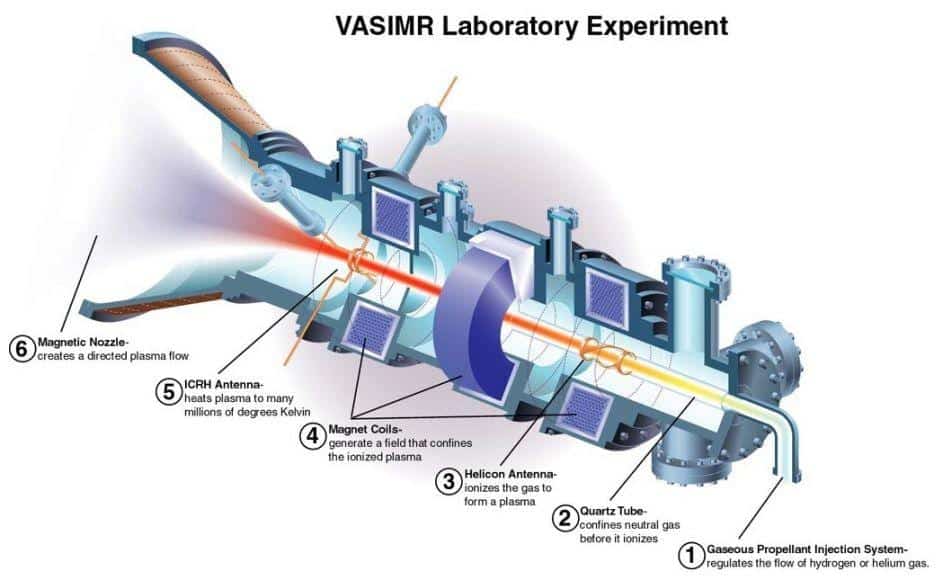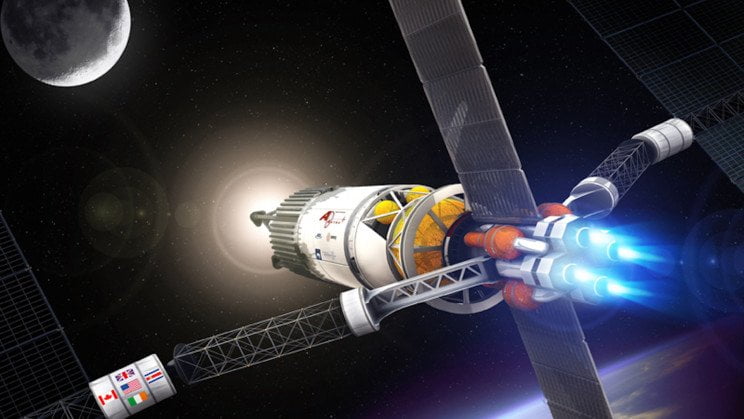Tests continue on a missile technology that could significantly reduce the time it takes to reach Mars, greatly reducing the risk of breakdowns and other deadly dangers for future astronauts.
The company To Astra Rocket, based in Costa Rica, announced that he completed a record 88-hour high-power endurance test of his plasma rocket Vasimr VX-200SS at 80 kW. The test, conducted at the company's laboratory in Texas near Houston, set a new world record for high-power endurance in electric propulsion.
Vasimr, years of failure: this is why it can be a triumph
The test is a great success, the culmination of years of trial and error and meticulous attention to detail. A nice reward for the tenacity and dedication of the team.
Franklin R. Chang Diaz, president and CEO of Ad Astra, 1.601 hours in space.
The Vasimr rocket (acronym for Variable Specific Impulse Magnetoplasma Rocket) has unique characteristics. It was designed to fly with a that engine uses nuclear reactors to heat the plasma to two million degrees. The hot gas is then channeled, via magnetic fields, out of the rear of the engine to propel it, in theory, to speeds of up to 197.950 km / h (123.000 mph).
Ad Astra's goal is not only to make much faster space flight possible, but also much safer. Sure, this rocket will send nuclear reactors hurtling through space at great speeds, but paradoxically the riskiest part is the launch, which still uses a chemically propelled rocket to reach orbit. Once there, the plasma engine activates: here is a video showing how the rocket works.
A rocket four times faster. Shorter journey, less expense and less risk.
In the seven months NASA expects to fly humans to Mars, many catastrophic failures could occur. This is why Díaz is convinced that a chemically propelled rocket will never take us to Mars. A conventional rocket must use its entire fuel reserve in a single controlled explosion during launch: there is no abort procedure, you cannot change course, and in the event of a failure, mission control has a communication delay of 10 minutes. It means that “from Houston” or wherever the control is located could find themselves watching helplessly as the rocket crew dies.
Vasimr will gradually accelerate until it reaches one maximum speed of 34 miles (54 km) per second by the XNUMXrd day since launch. This will make it four times faster than any existing chemical rocket. A speed that would reduce the journey until it lasted just one month.
Less time to travel in space means less exposure to solar radiation. A recent study (I talked about it here) states that missions to Mars should not exceed four years for the safety of the crew. A shorter trip presents, as mentioned, less risk of mechanical failure and fewer health risks due to the muscle atrophy effects of zero gravity. Since the ship's plasma engine can provide propulsion at any time, it could also change course if necessary.

What are the next steps?
Following the successful endurance test of Ad Astra's plasma rocket in July, the company is announcing its future plans. “With a new set of engine modifications already in production, we will now move on to demonstrate thermal steady state at 100 kW before 2022,” Díaz says in a press release.
Other companies such as DARPA are also developing a nuclear-powered space rocket. The Pentagon agency announced this year that it wants to demonstrate a nuclear thermal propulsion system above low-Earth orbit in 2025. In summary, it certainly looks like spaceflight is on track to go nuclear, greatly increasing human capability to travel "out of town".


